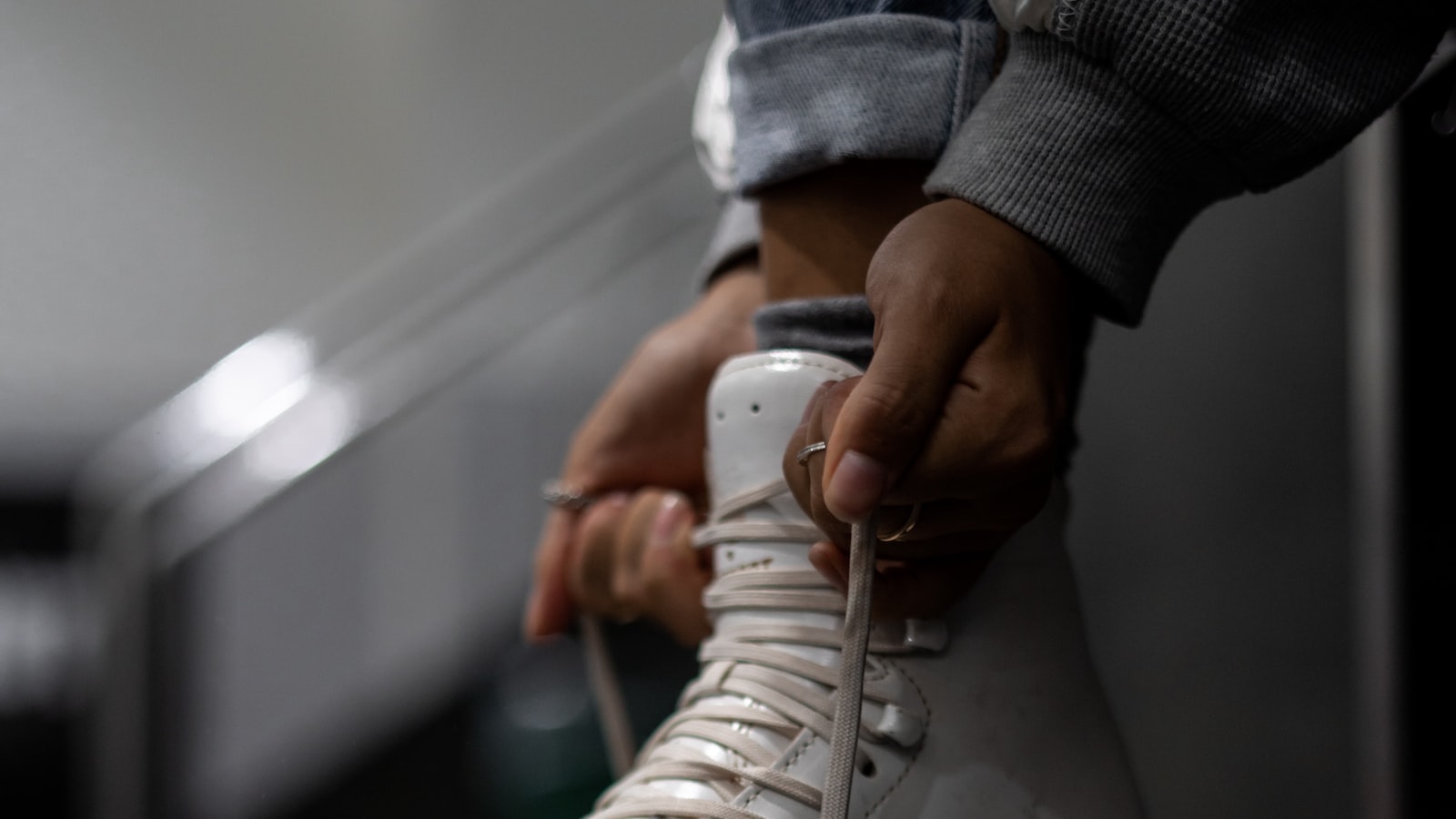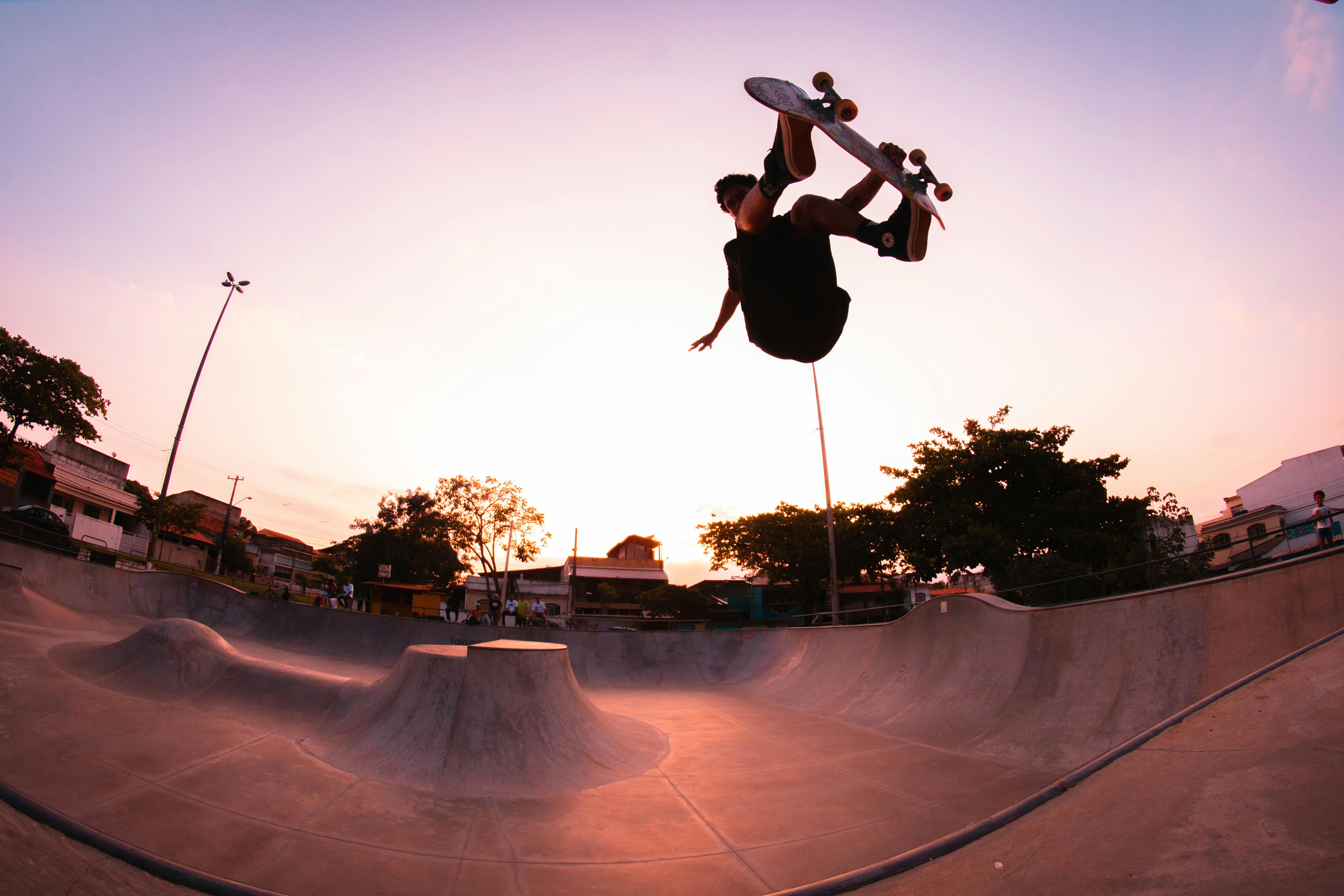What To Wear Skating

Skating is a fun and exhilarating activity that can be enjoyed by people of all ages. Whether you are a beginner or an experienced skater, it’s important to know what to wear when you hit the ice. Having the right gear not only ensures that you’ll stay safe and comfortable, but it also helps you perform your best. This guide will give you an overview of what clothing and accessories you should wear for skating.When heading to the ice skating rink, it’s important to wear the proper attire. Layering is key to staying warm and comfortable while on the ice. Start with a lightweight base layer such as a long-sleeved t-shirt or wicking underwear. Then add a fleece or wool mid-layer and top it off with a waterproof jacket, pants, and gloves. It’s also important to wear well-fitting pants that are flexible enough for you to move comfortably and securely tie your skates. Lastly, don’t forget about protective gear like helmets, elbow pads, and knee pads!
Essential Clothing For Ice Skaters
Ice skating is a popular sport and recreational activity that requires proper equipment and clothing. Having the right clothing for ice skating is essential for keeping warm, staying comfortable and being safe. It is important for each skater to select the proper clothing to suit their individual needs and skill level. The following list outlines the essential clothing items needed for an enjoyable experience on the ice:
1. Skates – The most important piece of equipment for ice skaters is a pair of well-fitted skates. They should fit snugly but not be too tight, as this can cause discomfort or even injury. Skates should also be comfortable, supportive and provide adequate ankle protection.
2. Socks – Thick socks are recommended when wearing skates to provide insulation and keep feet warm during skating sessions. Wool or synthetic material socks are best as they offer more cushioning and help to reduce blisters.
3. Pants – Loose-fitting pants are ideal for ice skaters as they provide flexibility of movement while allowing air circulation. Jeans or track pants are suitable, but sweatpants are best as they absorb moisture more quickly.
4. Jacket – A warm jacket is essential during cold weather skating sessions to keep the body temperature regulated. A waterproof jacket with a hood is ideal for protecting against rain or snow while on the ice.
5. Gloves – Gloves provide extra warmth and protection from cold temperatures while on the ice. They also help to protect hands from blisters caused by friction between gloves and skate laces.
6. Helmet – A helmet should always be worn when skating to protect against head injuries in case of a fall or collision with another skater or object.
By investing in these essential pieces of clothing, you can ensure that your time spent on the ice will be safe, comfortable and enjoyable!
Figure Skating Apparel
Figure skating is a beautiful and graceful sport that requires a lot of physical activity. The right clothing and accessories are essential for figure skaters to perform their best. Figure skating apparel includes items specifically designed for this type of skating, such as figure skates, costumes, tights, leggings, skirts, and tops. The skater’s costume should be comfortable and provide support for the upper body while allowing freedom of movement. Tights are important to provide warmth and help keep the body warm during practice and competition. Leggings are also important to provide additional warmth and support for the lower body while allowing freedom of movement. Skirts come in various lengths and materials depending on the preference of the skater. Tops should be lightweight and breathable to allow maximum flexibility during jumps and spins.
Speed Skating Apparel
Speed skating is a fast-paced sport that requires high levels of strength and agility. Speed skating apparel includes items specifically designed for speed skating such as speed skates, helmets, pads, jerseys, shorts, pants, gloves, socks, jackets, vests, neck warmers/scarves/wraps/hoods/caps/visors/balaclavas etc., which can be worn in layers or combined with additional layers to provide warmth while protecting against wind chill or wet weather conditions. The helmet should fit securely on the head while providing sufficient ventilation system that allows fresh air circulation around the head to keep it cool during intense activity. Pads should fit securely to provide protection against falls on slippery floors or bumps from other skaters during races or competitions. Jerseys should be made from lightweight fabric that allows maximum flexibility without impeding performance.
Ice Hockey Apparel
Ice hockey is an intense contact sport played on ice surfaces with sticks and pucks in order to score goals against an opposing team. Ice hockey apparel includes items specifically designed for this type of game such as hockey sticks, helmets with face masks or cages attached to them for protection from flying pucks or sticks swinging at high speeds; knee pads; elbow pads; shoulder pads; gloves; pants; jerseys; socks; shin guards etc., which can be worn in layers for added protection against falls onto hard icy surfaces during games or practices or additional warmth when playing outdoors in cold climates.. Jerseys should be lightweight yet protective enough against flying pucks and sticks while allowing enough flexibility during aggressive movements.
Protective Gear For Ice Skaters
Ice skating is a fun and popular activity, but it can be dangerous if you don’t wear the right protective gear. Protective gear for ice skaters includes helmets, elbow pads, knee pads, mouth guards and wrist guards. Helmets are essential for keeping your head safe from falls and collisions on the ice. They provide cushioning that can help protect your head in case of an accident. Elbow pads and knee pads are also important to have when ice skating, as they provide extra protection against abrasions and scrapes from falls. Mouth guards are also recommended for protecting your teeth from any impacts that may occur while out on the ice. Wrist guards can also be worn to help protect your wrists from any falls or impacts that may happen during your skating session. All of these items are essential in helping to keep yourself safe while enjoying the sport of ice skating.
It is important to make sure that you purchase quality protective gear when buying items for ice skating safety. Quality protective gear not only provides more cushioning in case of a fall, but it also lasts longer than lower quality products. Always make sure to check the fit of your protective gear before using it on the ice, as a poorly fitting helmet or other item can increase your risk of injury in case of an accident. It is also important to replace any worn out or damaged pieces of protective gear before heading out onto the ice surface.
Overall, wearing protective gear while out on the ice will greatly reduce your risk of injury should you take a fall or collide with another skater or object on the ice. Quality helmets, elbow pads, knee pads, mouth guards and wrist guards will give you peace of mind knowing that you are well-protected should an accident occur while you’re out enjoying a day at the rink.
Layering For Optimal Ice Skating Comfort
Layering is the key to staying warm and comfortable while ice skating. When layering for ice skating, you want to make sure that each layer is light, comfortable and breathable. The first layer should be a thin, lightweight base layer made of a material such as polyester or merino wool that will wick away sweat and keep you warm. Next, add a mid-layer such as a fleece or wool sweater to help provide additional insulation. Finally, top off your look with a windproof and waterproof outer shell that will keep you dry and protected from the elements. Also, don’t forget to add accessories such as a scarf, beanie or insulated gloves/mittens for those extra chilly days!
It is important to note that layering correctly for ice skating may take some trial and error. You want to make sure that each layer fits comfortably without feeling too bulky or restricting your range of motion. Additionally, it may be necessary to add or remove layers depending on the temperature outside so be sure to check the forecast before heading out on the ice.
Finally, when it comes to layering for ice skating comfort make sure that you are investing in quality materials and fabrics that will stand up against cold temperatures and harsh weather conditions. Quality materials not only ensure optimal warmth but also help protect your body from any potential injuries related to cold temperatures.

Choosing The Right Shoes For Ice Skating
Ice skating is an enjoyable sport that has been around for centuries. It’s a great way to stay active and enjoy the cold winter months. However, it’s important to make sure you have the right gear for ice skating, including the right shoes. Ice skating shoes should provide support and stability while still allowing you to move freely on the ice. Here are some tips for choosing the right shoes for ice skating:
The first thing you should consider is the type of material your shoes are made of. Leather is a popular choice because it provides good support and is also durable, but synthetic materials such as canvas or nylon may be more lightweight and breathable. You should also look for a shoe with a supportive sole that grips the ice well.
The fit of your shoe is also important when it comes to ice skating. Your shoe should fit snugly without being too tight or too loose. If your shoe is too tight, it can cause blisters or soreness, while if it’s too loose it can cause instability when you skate. Make sure to try on several different sizes and styles before making a decision.
You should also consider the type of activity you plan to do when selecting a shoe for ice skating. Figure skaters need more ankle support than hockey players, so they might want to choose a higher-cut figure skate with more padding around the ankle area. Hockey players typically prefer lower-cut skates so they can move quickly around the rink.
Finally, make sure you choose a shoe with good ventilation so your feet stay cool during long sessions on the ice. Look for mesh panels or other breathable materials that will help keep your feet cool and dry during intense workouts. With these tips in mind, you’ll be able to find the perfect pair of ice skating shoes that will help keep you safe and comfortable on the ice!
Dressing Appropriately For The Weather When Ice Skating
When ice skating outside, it is important to dress appropriately for the weather. Layering clothes is essential to keep warm and help regulate your body temperature. Start with a thin base layer of clothing such as long johns or leggings and a thin t-shirt. A thicker mid-layer should be added over the top, such as a fleece or hoodie. A waterproof outer layer, like a coat or jacket, should be worn on top to protect from wind and rain.
It is important to make sure your clothing is breathable and not too tight as this can cause you to overheat. Wear gloves and a hat on cold days to keep your extremities warm. Scarves are also useful for wrapping around your neck and face to protect against cold winds. In addition, wear socks that provide good insulation and cushioning for your feet.
Finally, have an extra change of clothes in case of any accidents on the ice or if you become too hot or cold while skating. If it’s raining or snowing, wear waterproof shoes or boots that will keep your feet dry. Taking care when dressing appropriately for ice skating will ensure you stay safe and enjoy yourself on the ice regardless of the weather conditions!
What Should I Wear to Stay Comfortable While Skating and Attending a Hockey Game?
When deciding what to wear for a hockey game, prioritize comfort and warmth. Layering is key—start with a moisture-wicking base layer, add a cozy sweater, and finish with a durable jacket. Don’t forget insulated pants and sturdy skates. Accessories like gloves and a hat will keep you cozy while cheering on your team!
Tips On How To Dress For Figure Skating Competitions
When it comes to figure skating, the way you dress for competitions can be just as important as your performance on the ice. Not only does your outfit need to make you look good, but it also needs to allow you to move freely and show off your skills. Here are some tips on how to dress for figure skating competitions.
First and foremost, make sure that your outfit is comfortable. You don’t want to be distracted by an uncomfortable costume or clothing during your routine. Choose materials that won’t get in the way of your movements and won’t cause you any discomfort while performing.
Your outfit should also reflect your personality and style. Pick a style that will draw attention to your performance rather than take away from it. If you are going for a traditional look, choose a dress or skirt with a coordinating top, and accessorize with jewelry and hairpieces that match the theme of the competition. For more modern looks, opt for something bolder like leggings and a tank top or even a jumpsuit.
Finally, make sure that all of the elements of your outfit work together harmoniously. Accessories should be kept minimal so they don’t distract from your performance, but pick pieces that will add a touch of sparkle or glamour when necessary. Choose colors and patterns that complement each other so that everything looks polished and cohesive when you step out on the ice.
By taking these tips into consideration when choosing an outfit for figure skating competitions, you can ensure that you look great while also ensuring comfort and flexibility during your performance!

Conclusion
Skating is one of the most popular activities around the world. It’s a great way to stay active and have fun. With so many different types of skating, it can be hard to know what to wear. The most important thing is comfort and breathability. Choose lightweight, flexible materials such as cotton or polyester that will allow you to move freely. Make sure you also wear the appropriate safety equipment such as helmets, knee and elbow pads, wrist guards, and mouthguards. Lastly, don’t forget to wear the proper shoes for the type of skating you’re doing – whether it’s inline skates or roller skates. With the right outfit and safety equipment in place, you’ll be ready to hit the rink!
Happy skating!
